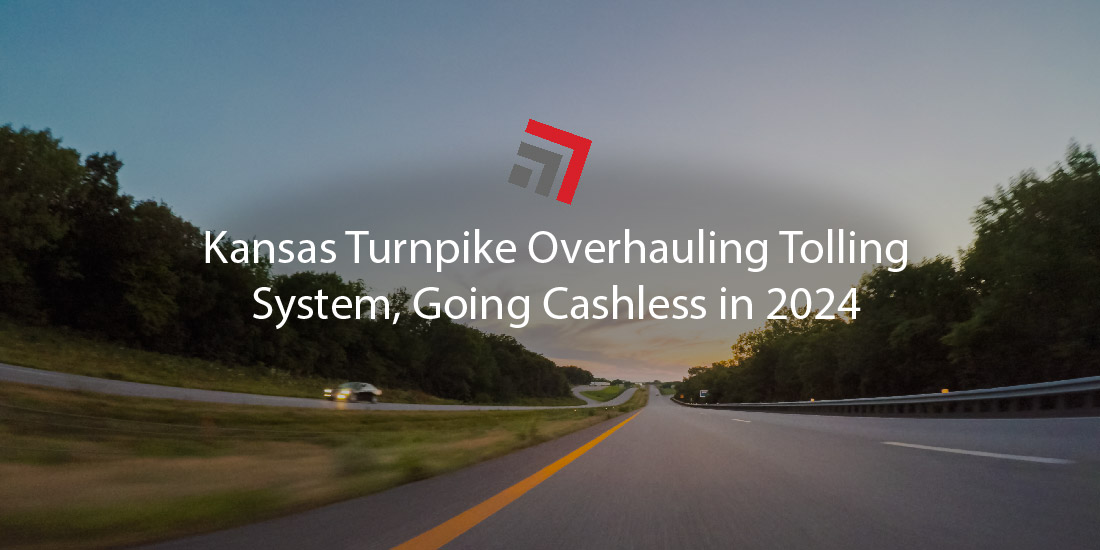Toll enforcement along the 236-mile-long Kansas Turnpike has been using the same, archaic, tolling plazas since the 1950s—the same decade in which former U.S. President Eisenhower established the interstate highway system.
The turnpike runs through the Sunflower State’s central and eastern parts, from Kansas City to its southern border with Oklahoma, with its tolling agenda represented through 21 plazas—basically, gates along the freeway where inbound traffic is prompted slow down, stop, and pay up.
As a popular lane for both passenger and commercial travel, this some 70-year-old system can be a routine inconvenience drivers must account for when transiting through the turnpike. This aging albatross has garnered criticisms from its users as too complex.
With these frustrations billowing, the Kansas Turnpike Authority (KTA), the entity that administers the toll-road, is undergoing a project to replace its toll plazas with modern advancements—overhead gantry cameras and transponder sensors.
The Kansas Turnpike is receiving a system overhaul and the entirety of the tab will be picked up by the KTA itself.
Cashless conversion is expected mid-2024
The addition of cameras and sensors will allow for cashless tolling, to which KTA CEO Steve Hewitt calls: “…safer, more convenient and more efficient for all drivers on the Kansas Turnpike.”
This new system will enable free-flow traffic between the turnpike and connecting roadways. The existing 21 toll plazas will not only be obsolete but demolished or reconfigured within a year or two.
While pressure from motorists likely had an influence, the crux of the change came as KTA reached a crossroads on its aging cash collection equipment.
The authority decided to invest in cashless capability, rather than spend money on a replacement of the traditional system.
Cost savings, at least in the short term, are not gained with this exchange, but the benefits of a cashless conversion—improvements towards operational efficiency, safety, and customer ease—are worth the investment in KTA’s eyes.
A cashless experience is expected on the Kansas Turnpike by mid-2024.
Toll rates haven’t been determined yet
Drivers can expect an easier and different system than the one that dates back to when Elvis Presley was churning out hit after hit.
The first noticeable change will be toll points. They’ll be moved onto the roadway itself and overhead gantries will be installed that identify a driver’s license plate and K-TAG (a sticker tag issued for turnpike users that collect tolls electronically).
Instead of placing their vehicles in park and handing over crumpled bills, users will instead be electronically tolled based on how many gantries they pass under.
There hasn’t been an official word on rates for commercial or passenger drivers yet—the KTA board still needs to approve their charges per mile for the cashless system—but there are two types of toll rates that have been confirmed—one for sensor devices and another for license plate photos captured by gantries.
A spokesperson for the turnpike said the board is expected to release cashless toll rates in October.
The KTA is paying for the system revamp on its own through the organization’s toll revenue. Ironically, the authority has not received any state or federal funding even though the turnpike is a part of the interstate highway system.
The price tag is estimated to be $85 million, according to the KTA’s technology director.
Final Thoughts
With the new system coming into play in mid-2024, truck drivers will enjoy other features than just a cashless experience. They will see signage showing available parking spaces at service areas and an account management system that accommodates fleets.
Please contact us if you have any questions regarding this topic or any others in cross-border logistics. In addition, stay up to date with weekly headlines from both trucking and rail via our Road Map newsletter.
More blogs similar to this:



Recent Comments